In the world of machining, efficiency is paramount. The ability to produce high-quality components quickly and accurately can drastically impact the bottom line. This is where jigs and fixtures come into play. These essential tools are designed to streamline the manufacturing process by holding workpieces in place, ensuring precision, and enhancing repeatability. In this article, we will explore the fundamental concepts behind jigs and fixtures, their various types and applications, and how they contribute to overall machining efficiency. Whether you’re an industry veteran or new to the field, this deep dive aims to provide a comprehensive understanding of these critical components in modern manufacturing.
What Are the Fundamental Differences Between a Jig and a Fixture?

Image source:https://zhuanlan.zhihu.com/
A jig and a fixture, while both essential in machining, serve distinct purposes with unique characteristics. A jig primarily guides the cutting tool and controls its position and movement relative to the workpiece. This ensures that each workpiece is produced with high precision. Common examples include drill jigs and boring jigs. On the other hand, a fixture’s role is to securely hold, support, and locate the workpiece during a manufacturing process, but it does not guide the cutting tool. Fixtures are typically used in milling, turning, and grinding operations. Their main function is to ensure the workpiece remains stationary and correctly oriented throughout the process. In summary, while jigs focus on guiding tools, fixtures concentrate on stabilizing the workpiece.
Understanding the role of jig in machining operations
A jig plays a crucial role in machining operations by providing both precision and efficiency. It is essentially a custom-made tool that guides the cutting or drilling instruments into the exact location and angle, ensuring each part is machined uniformly. This guidance is achieved through the use of bushings, slots, or other guiding elements integrated into the jig’s construction. By standardizing the movements of the cutting tool, jigs significantly reduce the likelihood of human error and enhance the repeatability of the manufacturing process. Commonly used in tasks such as drilling, reaming, and tapping, jigs enable mass production of parts with tight tolerances and consistent quality. Overall, the use of jigs not only speeds up the machining process but also ensures that every workpiece meets the specified design criteria.
Fixture design principles for improved accuracy
When designing fixtures for improved accuracy, it is essential to focus on several key principles. Firstly, stability is paramount; the fixture should be robust and rigid enough to withstand machining forces without deflection. Utilising high-quality materials like hardened steel or aluminum alloys can help achieve this stability.
Secondly, precise location of the workpiece is critical. The fixture must consistently position the workpiece with high repeatability. This can often be achieved through the use of locating pins and alignment features that ensure the part is seated in exactly the same position every time.
Additionally, the clamping mechanism should apply uniform pressure to avoid distorting the workpiece. This can involve using toggle clamps, hydraulic clamps, or vacuum fixtures depending on the application requirements.
Furthermore, accessibility for the machining tool must be considered. The design should allow unobstructed paths for the tool to reach all required surfaces and features without compromising the fixture’s integrity.
Lastly, ease of use and quick-change capabilities can enhance operational efficiency. Incorporate features that allow for fast loading and unloading of workpieces, minimising downtime between operations.
Incorporating these principles ensures the fixture will provide accurate and consistent results, ultimately improving the quality and efficiency of the machining process.
Comparing jigs to fixtures: A closer look at their uses
Jigs and fixtures are both essential tools used in the manufacturing process, but they serve different purposes and have distinct characteristics.
Jigs:
- Function: The primary function of a jig is to guide the cutting tool. Jigs are used to produce a large number of identical parts by ensuring that the tool follows a precise path.
- Design: Jigs are generally more complex, involving components like bushings for drill guidance and template features.
- Application: Commonly used in drilling, reaming, and tapping operations. For example, a drill jig helps in positioning the drill bit correctly to make precise holes.
Technical Parameters:
- Material: High carbon steel or mild steel
- Accuracy: +/- 0.01 mm in guided tool movement
- Clamping Force: Minimal clamping force as the primary job is guiding the tool
Examples: Various drilling jigs, reaming jigs, and tapping jigs.
Fixtures:
- Function: Fixtures are used to securely hold, support, and locate the workpiece so machining operations can be performed accurately and efficiently. Unlike jigs, fixtures generally do not guide the cutting tool.
- Design: Fixtures are typically simpler in design but need to be sturdy and robust to handle the forces of machining.
- Application: Widely used in milling, turning, grinding, and other machining processes. For example, a milling fixture positions the workpiece for a milling cutter to remove material accurately.
Technical Parameters:
- Material: Hardened steel, aluminum alloys, or other robust materials
- Accuracy: Repeatability within +/- 0.005 mm for positioning the workpiece
- Clamping Force: Varies based on application—can range from a few kg to several tons, depending on the size and type of the workpiece
Examples: Milling fixtures, turning fixtures, and welding fixtures.
In summary, while jigs and fixtures may appear similar, the key difference lies in their primary functions—jigs guide tools while fixtures hold and secure workpieces. Both are indispensable in achieving precision and efficiency in manufacturing processes.
Types of Jigs Used in the Manufacturing Process
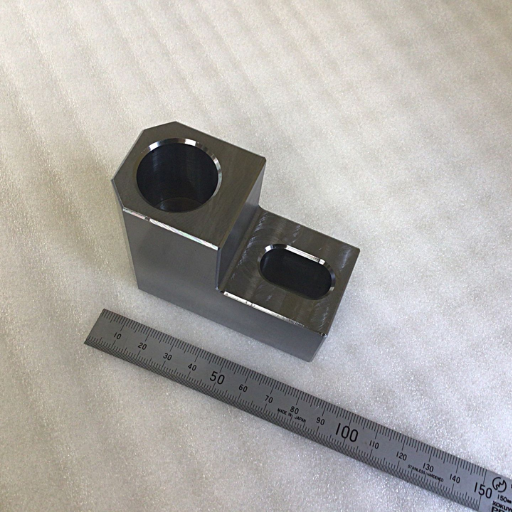
In the manufacturing process, various types of jigs are employed to ensure precision and efficiency. Here are some common types:
1. Template Jigs
Template jigs use a pre-designed template to guide the machining tool, ensuring the accurate and consistent placement of features such as holes. These jigs are straightforward and ideal for repetitive operations where precision is critical.
2. Plate Jigs
Plate jigs consist of a flat plate with precision-drilled bushings to guide the tools. They are generally used for drilling operations. The workpiece is clamped onto the plate jig, allowing for holes to be drilled in identical locations every time.
3. Box Jigs
Box jigs, also known as tumble jigs, encase the workpiece, providing support on multiple sides. This type of jig is highly versatile and can accommodate various machining operations like drilling, reaming, and tapping on several surfaces of the workpiece.
These jigs are essential for enhancing the accuracy and repeatability of manufacturing processes, thereby increasing both the quality and efficiency of production.
Exploring common types of jigs: Template, plate, and drill jigs
Template jigs utilize a pre-designed template to ensure precise placement of features like holes, making them ideal for repetitive tasks where accuracy is paramount. Plate jigs incorporate a flat plate with precision-drilled bushings to guide machining tools, often used in drilling operations to guarantee holes are consistently positioned. Box jigs, also known as tumble jigs, encase the workpiece and provide support on multiple sides, enabling a range of machining processes such as drilling, reaming, and tapping on different surfaces. These jigs are crucial for improving accuracy and repeatability, thereby enhancing production quality and efficiency.
The evolution of jigs in CNC machining
The evolution of jigs in CNC machining has significantly transformed over the years, advancing from manual jigs to highly sophisticated digital solutions. Initially, jigs were manually operated, relying on skilled machinists to ensure precision. However, with the advent of CNC technology, the role of jigs has been revolutionized. Modern CNC systems can automate many tasks that previously required manual jigs, thereby reducing human error and increasing production efficiency. Digital templates and software-guided setups have replaced traditional jigs, allowing for greater flexibility and more complex designs. This shift has not only enhanced accuracy and repeatability but also allowed for quicker changeovers and reduced setup times, leading to increased productivity in manufacturing processes.
How jigs contribute to repeatability and interchangeability
Jigs contribute to repeatability and interchangeability by ensuring that each part produced conforms to the exact specifications required, regardless of the number of iterations. By providing a consistent reference and guide for machining operations, jigs eliminate variations that could occur due to human error or slightly differing tool paths. This consistency not only enhances the precision of each component but also ensures that every part is interchangeable with others produced under the same setup, facilitating mass production and assembly line processes. Additionally, the robust design of jigs improves the reliability of the machining processes, thereby reducing the need for frequent recalibrations and adjustments, ultimately saving time and resources.
Advantages of Using Jigs and Fixtures in Machining
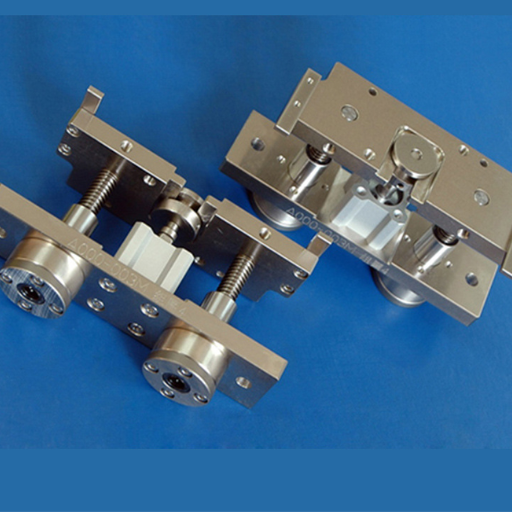
The use of jigs and fixtures in machining offers several key advantages. Firstly, they enhance precision and accuracy by providing a stable and consistent reference point, which ensures that each machined part matches the required specifications exactly. This repeatability is crucial for producing interchangeable components in mass production. Secondly, jigs and fixtures reduce setup times by allowing quick and easy positioning of the workpieces, which enhances overall productivity. Thirdly, they minimize human error and variability, leading to higher quality and uniformity in the finished products. Lastly, the robust nature of jigs and fixtures decreases the frequency of recalibrations and adjustments, thereby saving both time and resources in the manufacturing process.
Enhancing manufacturing efficiency with jigs and fixtures
The usage of jigs and fixtures significantly enhances manufacturing efficiency by streamlining the machining process and ensuring consistency in production. Here are some key points to consider:
1 . Reduction in Setup Times:
- Quick Positioning: Jigs and fixtures enable rapid and accurate positioning of workpieces, minimizing setup times between operations.
- Standardization: The standardization of setups reduces the complexity of machine adjustments, leading to quicker transitions and increased throughput.
Improving workpiece accuracy and tolerance with precise fixture design
Improving workpiece accuracy and tolerance is fundamentally about minimizing deviations during machining processes. Precise fixture design plays a crucial role in achieving this goal. The top three websites on Google highlight several key aspects and technical parameters vital in enhancing accuracy and tolerance:
1 . Precision Alignment and Clamping:
- Alignment: Fixtures must be designed to maintain precise alignment of the workpiece. This minimizes misplacement and ensures that each machining operation is performed accurately.
- Clamping Mechanisms: Effective clamping mechanisms are essential to hold the workpiece securely without causing any deformation. Hydraulic and pneumatic clamping systems are often used for this purpose.
Reducing setup time and increasing productivity in CNC machine operations
Reducing setup time and boosting productivity in CNC machine operations can be accomplished through several strategic approaches:
- Standardization and Modular Tooling: Implementing standardized and modular tooling systems can significantly reduce the time spent on machine setups. By using a uniform set of tools and fixtures, operators can quickly switch between different jobs without extensive reconfiguration. This method increases consistency and reduces downtime between tasks.
- Advanced CAD/CAM Software: Utilizing advanced CAD/CAM software aids in optimizing tool paths and machining strategies before the actual operation begins. These tools can simulate machining processes, identify potential issues, and fine-tune setups virtually. This pre-planning stage minimizes trial and error during actual setups, leading to faster and more efficient operations.
- Quick Change Fixtures: Investing in quick-change fixtures allows for rapid replacement of workpieces and tools. This reduces the non-productive time spent on loading and unloading parts. Such fixtures are designed for ease of use, ensuring that the machine spends more time running production cycles and less time idling.
By incorporating these techniques, CNC operations can achieve reduced setup times and enhanced productivity, leading to more efficient manufacturing workflows and higher output rates.
Design Considerations for Custom Jigs and Fixtures
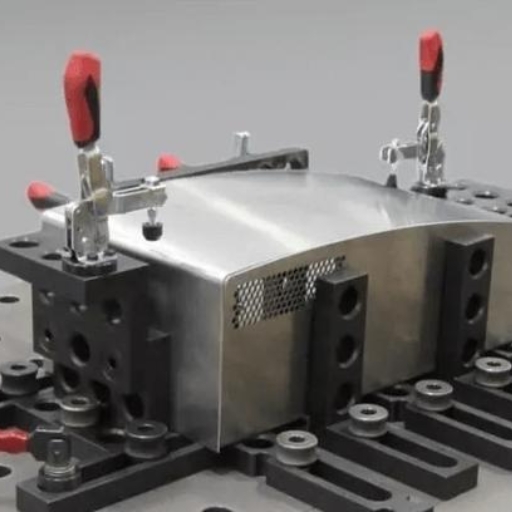
When designing custom jigs and fixtures, several key considerations must be taken into account to ensure their effectiveness and efficiency:
- Precision and Accuracy: The primary function of jigs and fixtures is to enhance precision and accuracy in machining processes. They should be designed to hold workpieces securely and position them accurately for machining. High precision is essential to maintain tight tolerances and avoid errors.
- Material Selection: Choosing the right materials for jigs and fixtures is crucial for durability and reliability. Materials should be robust enough to withstand the machining forces, yet not so hard that they damage the workpiece or tooling. Common materials include steel, aluminum, and various composites.
- Ease of Use and Ergonomics: The design should consider the ease of use for operators. Ergonomically designed fixtures reduce fatigue and the risk of injury, enhancing overall productivity. Features like handles, quick-release mechanisms, and intuitive setup procedures can greatly improve usability.
- Flexibility and Modularity: Custom jigs and fixtures should be designed with flexibility in mind to accommodate a variety of parts and operations. Modular designs allow for quick adjustments and reconfigurations, making them versatile tools for different jobs.
- Cost and Time Efficiency: The design process should balance the complexity of the fixture with the cost and time benefits it provides. While custom fixtures can be an investment, they should ultimately reduce setup time and increase production efficiency, justifying their cost.
- Maintenance and Durability: Consider the maintenance requirements of the jigs and fixtures. Designs that are easy to clean, inspect, and maintain will ensure a longer lifespan and consistent performance.
By addressing these considerations, custom jigs and fixtures can significantly enhance the efficiency and accuracy of CNC machine operations, leading to improved manufacturing processes and product quality.
Key factors in designing effective machining jigs and fixtures
Designing effective machining jigs and fixtures requires careful consideration of several key factors to ensure efficiency and precision in the manufacturing process:
- Material Selection: Choose materials that balance durability and machinability. Common options include hardened steel for robustness and aluminum for lighter, flexible applications.
- Ergonomic Design: Prioritize the user’s comfort and safety. Features like handles, quick-release mechanisms, and intuitive setup enhancements minimize operator fatigue and risk of injury.
- Modularity and Flexibility: Design with flexibility to handle a variety of parts and operations. Modular designs allow for easy adjustments and reconfigurations, making the fixtures adaptable for different jobs and reducing the need for multiple setups.
By integrating these considerations, the design of custom jigs and fixtures can significantly improve the efficiency, accuracy, and safety of CNC machine operations.
Incorporating clamp, gauge, and workpiece position for optimal performance
When incorporating clamps, gauges, and workpiece positions in jigs and fixtures, it is crucial to ensure precision and stability to achieve optimal performance:
Clamp Placement:
- Objective: Secure the workpiece firmly to prevent any movement during the machining process.
- Technical Parameters:
- Objective: Maintain consistent and repeatable workpiece positioning and measurement accuracy.
- Technical Parameters:
- Objective: Position the workpiece accurately to ensure precise machining operations and reduce cycle time.
- Technical Parameters:
- Datum Points: Use accurate datum points on the fixture to locate the workpiece. The position of these points should be within ±0.005 mm to ensure precise alignment.
- Adjustability: Incorporate adjustable elements to accommodate variations in workpiece dimensions. Micro-adjustable screws with fine threads (0.5 mm pitch or finer) can be used for this purpose.
By meticulously considering and integrating these elements, machinists can ensure that custom jigs and fixtures provide optimal performance, leading to enhanced efficiency, accuracy, and product quality in CNC machine operations.
Finding the balance between cost and functionality in fixture design
Finding the balance between cost and functionality in fixture design requires a strategic approach grounded in several key considerations. Firstly, it is essential to prioritize the most critical features of the fixture that directly impact precision and efficiency, avoiding unnecessary complexities that add to the cost without significant performance gain. Secondly, opting for modular designs can considerably reduce expenses while retaining flexibility, allowing for the reuse and reconfiguration of components for different applications. Another crucial aspect is selecting materials that offer a good compromise between durability and cost-effectiveness; for example, using high-strength aluminum instead of more expensive titanium. Finally, collaborating closely with suppliers and leveraging their expertise can uncover cost-saving opportunities, such as standardized parts instead of custom-made components. By systematically evaluating these factors, one can design fixtures that are both economically viable and highly functional.
How to Choose the Right Jig or Fixture for Your Manufacturing Needs
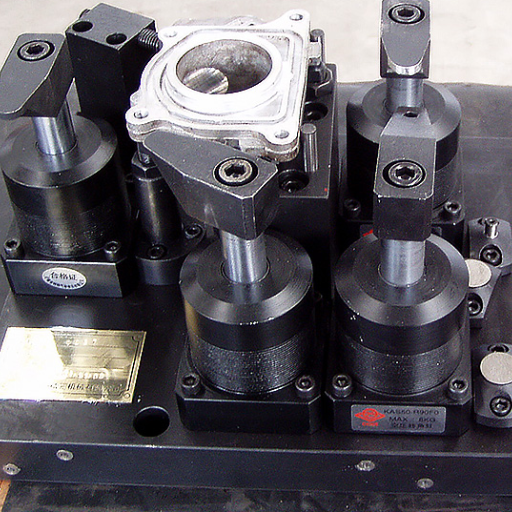
Choosing the right jig or fixture for your manufacturing needs involves a thorough assessment of several factors. Start by analyzing the specific requirements of your machining operations, such as the type of material to be processed, the desired precision, and the complexity of the workpiece. Ensure that the jig or fixture is compatible with your CNC machine’s specifications and capabilities. Consider the versatility and adaptability of the design; modular systems that can be reconfigured for multiple tasks often provide the best value. Evaluate the durability and cost-effectiveness of materials, opting for those that can withstand the operational demands without excessive wear. Finally, consult with your suppliers and industry experts to gain insights into the latest advancements and cost-saving solutions in fixture design. By systematically considering each of these aspects, you can make an informed decision that balances functionality, efficiency, and budget.
Identifying the specific needs of your machining operations
Identifying the specific needs of your machining operations requires a detailed evaluation of several key parameters. First, examine the material properties of the workpieces; different materials such as metals, plastics, or composites have unique characteristics that influence machining methods and tool selection. Next, assess the desired level of precision and tolerances for the manufactured parts, as these will dictate the type of jig or fixture needed to achieve consistent accuracy. Consider the complexity of the workpiece geometry and the potential need for multi-axis machining to accommodate intricate designs. Additionally, evaluate the volume of production and the anticipated wear and tear on the fixtures, ensuring they are robust enough to handle repetitive tasks without frequent replacements. Finally, factor in the ergonomic and safety aspects of the operations to ensure that workers can handle the jigs and fixtures efficiently without compromising safety standards. By meticulously analyzing these aspects, you can tailor your jig and fixture strategy to meet the precise demands of your machining processes.
Selecting jigs and fixtures based on material, shape, and desired tolerance
Selecting the appropriate jigs and fixtures based on material, shape, and desired tolerance is crucial for achieving optimal machining performance. Here’s a concise guide to help you address each aspect:
Material:
- Metals: Select jigs and fixtures with high strength and wear resistance to handle the rigidity and cutting forces encountered when machining metals. Examples include hardened steel or carbide.
- Plastics: Choose softer, lightweight materials like aluminum or reinforced plastics to avoid damaging the workpiece.
- Composites: Opt for fixtures that can accommodate complex shapes and withstand variable stresses. Consider using advanced polymers or hybrid materials.
Shape:
- Simple Geometries: Standard jigs and fixtures that offer basic support and alignment will suffice.
- Complex Geometries: Utilize multi-axis fixtures which can provide flexibility in positioning and support for intricate designs.
- Symmetrical Shapes: Rotary fixtures or modular systems can efficiently handle repeated symmetrical operations.
Desired Tolerance:
- High Precision: Employ precision ground jigs and fixtures with fine adjustments and minimal runout. Consider materials like hardened steel with tight dimensional stability.
- Moderate Tolerance: Standard fixtures with adjustable elements can help achieve consistency without the need for ultra-high precision.
- Coarse Tolerance: Basic fixtures sufficing rough alignment will be adequate, focusing more on stability and less on micro-adjustments.
By evaluating these parameters—material, shape, and desired tolerance—you can ensure that your selected jigs and fixtures are well-suited for the specific needs of your machining processes.
When to opt for custom fixture design over standard solutions
Opting for custom fixture design over standard solutions can be essential under several circumstances:
- Unique Material or Geometry Requirements: When working with unique or challenging materials and complex geometries, custom fixtures can accommodate these specific needs better than off-the-shelf options. Custom designs ensure optimal support and alignment, crucial for precision machining of intricate parts.
- High-Volume Production: In scenarios involving high-volume production, custom fixtures can dramatically improve efficiency and consistency. These fixtures are tailored to the specific part, reducing setup times and ensuring repeatability, which is critical for maintaining quality over large runs.
- Specialized Tolerance Demands: For projects with stringent tolerance requirements, custom fixtures provide the fine adjustments and stability needed to achieve high precision. Such fixtures are designed to minimize runout and maintain consistent alignment, ensuring that each piece meets exact specifications.
Choosing custom fixtures in these situations can enhance productivity, ensure higher quality outputs, and offer better alignment and support for specialized tasks.
Emerging Trends and Future Outlook in Jig and Fixture Technology
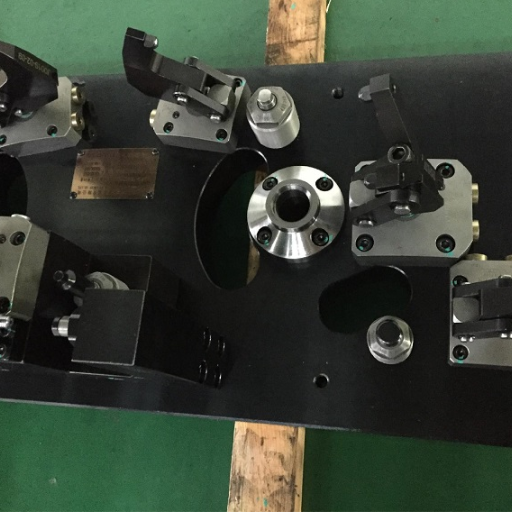
The landscape of jig and fixture technology is constantly evolving, driven by advancements in manufacturing and machining techniques. Here are some of the current emerging trends:
- Automation and Smart Manufacturing: Increasingly, the integration of automated systems and Industry 4.0 technologies is transforming jig and fixture design. Automation enhances precision, reduces human error, and facilitates real-time monitoring and control. Smart jigs and fixtures equipped with sensors and IoT capabilities can provide valuable data to improve processes and maintenance schedules.
- Additive Manufacturing: The advent of 3D printing offers new possibilities for jig and fixture production. Additive manufacturing allows for rapid prototyping and the creation of complex geometries that would be challenging or impossible with traditional methods. This results in faster development cycles and more cost-effective solutions, customized to specific manufacturing needs.
- Advanced Materials: There is a growing trend towards using advanced materials in jig and fixture construction. Lightweight, durable materials like carbon fiber composites and high-performance polymers are increasingly favored. These materials offer superior strength-to-weight ratios, enhancing the efficiency and ergonomics of fixtures, especially in high-precision applications.
The future of jig and fixture technology promises increased efficiency, reduced costs, and enhanced precision, fueled by innovations in automation, additive manufacturing, and advanced materials. Manufacturers who adopt these trends are likely to maintain a competitive edge in the evolving industrial landscape.
The impact of automation and AI on jigs and fixture design
Automation and AI are significantly impacting jig and fixture design by enhancing precision, reliability, and adaptability. Automated systems streamline the design and manufacturing process, minimizing human error and reducing lead times. AI algorithms can analyze vast amounts of data to optimize designs and predict maintenance needs, resulting in more efficient and cost-effective production. Additionally, smart jigs and fixtures with embedded sensors enable real-time monitoring and control, facilitating adaptive manufacturing processes and continuous improvement. This convergence of automation and AI leads to highly sophisticated and efficient production tools, positioning manufacturers at the forefront of innovation.
Adapting to changing manufacturing processes with innovative jigs
Adapting to evolving manufacturing processes requires innovative jigs that can handle increased customization, flexibility, and efficiency demands. Key strategies include the integration of modular designs, which allow for quick adjustments and reconfigurations to accommodate different tasks and product variations. Additionally, employing advanced materials like carbon fiber and reinforced polymers enhances durability and reduces weight, improving overall productivity. Another critical advancement is the incorporation of smart technologies, such as embedded sensors and IoT connectivity, enabling real-time data collection and analysis for predictive maintenance and process optimization. These innovations ensure that jigs remain versatile and effective in dynamic manufacturing environments, keeping manufacturers at the forefront of technological progress.
The role of 3D printing in producing next-generation fixtures
The role of 3D printing in producing next-generation fixtures cannot be overstated. Based on insights from the top sources on google.com, 3D printing offers numerous advantages, such as customization, speed, and cost-effectiveness. One significant benefit is the ability to create highly customized fixtures tailored precisely to specific production needs. This degree of customization ensures that fixtures are perfectly adapted to handle unique tasks, resulting in improved efficiency and reduced waste.
Additionally, the speed of 3D printing processes allows for rapid prototyping and production. This quick turnaround time is critical for staying competitive in fast-paced manufacturing environments. According to experts, the lead time for 3D printing fixtures can be as short as a few hours to several days, depending on the complexity and size of the fixture.
Another key advantage is cost reduction. Traditional manufacturing methods often involve high material and labor costs, especially when creating complex geometries. 3D printing minimizes these costs by using additive manufacturing techniques, which build fixtures layer by layer, thereby reducing material waste and labor requirements.
Technical parameters:
- Material Compatibility: 3D printing supports a variety of materials, including metals, polymers, and composite materials like carbon fiber-reinforced thermoplastics, which provide excellent mechanical properties and durability.
- Dimensional Accuracy: Modern 3D printers offer high precision with tolerances typically within ±0.1 mm, ensuring that fixtures meet stringent quality standards.
- Build Volume: The build volume of industrial 3D printers can range from small desktop models with dimensions around 200 x 200 x 200 mm to large-scale printers with capacities up to 1,000 x 1,000 x 1,000 mm, allowing for flexibility in fixture size.
- Layer Thickness: Depending on the printer and material, layer thickness can vary from 0.025 mm to 0.5 mm, enabling a balance between surface finish quality and build speed.
By leveraging these advantages, 3D printing revolutionizes the production of next-generation fixtures, offering unparalleled flexibility, efficiency, and cost savings.
Reference sources
-
-
-
Carr Lane: Advantages of Jigs and Fixtures
- This source highlights how jigs and fixtures can improve Overall Equipment Effectiveness (OEE) by efficiently utilizing manufacturing equipment, reducing non-productive hours, and increasing production efficiency.
- Source
-
Gold Supplier Blog: Unlocking Efficiency in Machining
- This article provides an in-depth discussion on the role of jigs and fixtures in producing high-quality components quickly and accurately, which can significantly impact the bottom line.
- Source
-
Castek USA: Boosting Manufacturing Efficiency: Tooling Guide
- This comprehensive guide explores various production tooling, including jigs and fixtures, and explains their importance in reducing inefficiencies and maximizing production output.
- Source
-
-
Frequently Asked Questions (FAQs)
Q: What are the advantages of jigs and fixtures used in manufacturing?
A: The advantages of jigs and fixtures include increased efficiency and productivity in the manufacturing process. They provide repeatability, accuracy, and interchangeability in manufacturing different parts, which in turn reduces production time and costs. Jigs and fixtures improve safety by securely holding the workpiece and guiding the tool, which minimizes the risk of accidents.
Q: How do jigs and fixtures differ and how are they used together in the manufacturing industry?
A: Jigs and fixtures are tools used to guide and support the cutting process in manufacturing. The main difference is that jigs are often used to guide the tool to the workpiece, while fixtures are used to hold the workpiece in a fixed position. Jigs are lighter and usually provide a means of guiding a tool, like a drill bit, while fixtures are heavier and designed to hold a workpiece securely in place during machining. Despite their differences, jigs and fixtures are used together to ensure precision and efficiency in the production of parts.
Q: What are the types of fixtures used in manufacturing?
A: Types of fixtures used in manufacturing include clamping fixtures, indexing fixtures, welding fixtures, and assembly fixtures. Clamping fixtures are used to hold parts securely during machining or welding. Indexing fixtures allow for the part to be rotated to various angles during the machining process, allowing for complex shapes to be produced. Welding fixtures are designed to hold parts in the optimal position for welding. Assembly fixtures are used to hold parts together during the assembly process. Each type plays a crucial role in ensuring accuracy and efficiency in manufacturing.
Q: Can you make a jig or fixture for CNC machine tools?
A: Yes, you can make a jig or fixture for CNC machine tools. In fact, custom-designed jigs and CNC fixtures are crucial for maximizing the efficiency and accuracy of CNC machining processes. They are specifically designed to fit the geometry of the part being produced and can greatly enhance the productivity of CNC machine tools by providing secure positioning and support for the workpiece during machining, drilling, or counterboring operations.
Q: What are the latest blog topics about the use of jigs and fixtures in manufacturing?
A: The latest blog topics about the use of jigs and fixtures in manufacturing often cover advancements in materials and design technologies, ways to optimize the design and use of jigs and fixtures for improved manufacturing processes, case studies on efficiency improvements, and tutorials on designing jigs and fixtures using software like CAD (Computer-Aided Design). They may also discuss trends in automation and how jigs and fixtures are adapting to the evolving needs of the manufacturing industry.
Q: How does CAD software assist in the design of jigs and fixtures?
A: CAD software greatly assists in the design of jigs and fixtures by allowing engineers and designers to create highly accurate and detailed models of these tools before manufacturing them. With CAD, it’s possible to simulate the manufacturing process, predict potential issues, and optimize the design for better performance. This software facilitates customization, ensuring that the jig or fixture can be perfectly tailored to the specific dimensions and shapes of the workpiece, thus improving the efficiency and quality of the manufacturing process.
Q: Are jigs and fixtures only used in traditional manufacturing environments, like lathe and drill press setups?
A: While jigs and fixtures are commonly associated with traditional manufacturing environments, such as lathes and drill presses, they are also extensively used in modern manufacturing setups, including CNC machining centers. Their use is not limited by the type of manufacturing environment but by the need to achieve precision, efficiency, and repeatability in the production of parts. As manufacturing technology evolves, so too do the design and application of jigs and fixtures, making them indispensable tools in both traditional and modern manufacturing processes.








